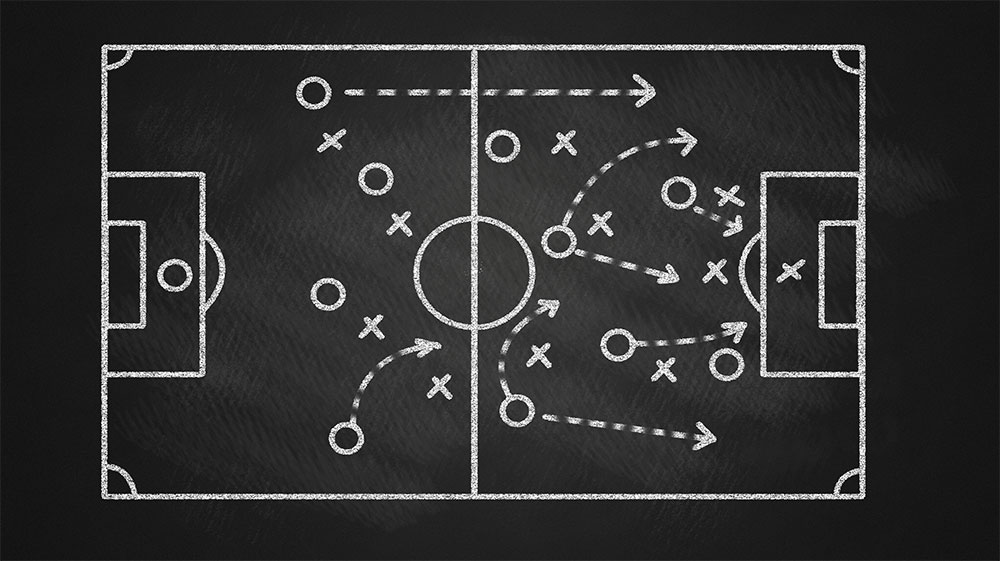Reading time: 5 minutes
When you work with youth teams at grassroots level, producing consistent performances can be very difficult as players often only have one or two hours playing together each week.

One way to help youth teams produce consistent performances is having a style of play.
Here are a few things I have found helpful in developing a style of play:
1. Be clear about what you want from your team
Do you want to play on the counter, dominate possession, build from the back or play more direct? There’s no right or wrong way, you may need to change your style of play to suit your players but it is important to know as the coach what way you would like your team to play.
2. Talk to your players
Whether you are working with U9, U11 or senior players it is important that they understand how you would like them to play. They may only be 10 or 11 years old but nowadays kids watch a lot of football on TV. Try to relate your desired style of play in their language:
- “Have you seen how Messi and Ronaldo will take on defenders?”
- “Watch how Barcelona play out from the back, that’s how we’d like to play out from the keeper”
- “Who has watched La Liga recently? Do you see how most teams like to move the ball quickly?”
Don’t be afraid to talk to your players about style of play, if you’re trying to implement a style throughout your club it is important to start this with your youngest teams early.
3. Position specific Roles and Responsibilities
Now your players understand how you would like them to play as a team, it is also important they know how they each fit into the jigsaw.
Where should they be when you have the ball? How should they react when you don’t? Rather than bombarding players with information, one or two tips to an individual before a game or at half time can give them a focus. “If our winger can’t play forward, see if you can find space to provide him with an option to keep possession”.
Allow players time in various positions, this will help develop a more rounded player as it will present them with challenges they may not get if they play in the same position every week.
4. Development over winning
Central to developing a style of play is ensuring players have the environment to learn without fear. If for example you are learning to play out from the back, your players will make mistakes and sometimes concede goals, maybe resulting in a loss. It’s important that your players know that you trust them to keep trying, and as they learn they will develop the skills which will benefit them in years to come.
5. Patience, and practise
Be patient with your players, organise your training sessions around the basic techniques which will translate into their style of play on game day. Plan your sessions to be fun, with a specific purpose and let players know how this will help them in a match.
For example: “Today we are going to work on our passing and receiving, this will help us to be more comfortable in possession on Saturday”.
Practise makes permanent!
Conclusion
As coaches we should be moving away from turning up on match day, picking a team and hoping for the best. If you have a common goal which coaches and players understand, and one which everyone buys into, it can be the key to producing consistent performances.
Be clear on how you want your team to play, then talk to your players and get them to buy in to it. Let your players know what their role is in the team and give them the freedom to learn and make mistakes free from scrutiny. Finally, be patient with your players, developing a style of play will take time and lots of practise.
Good luck!
